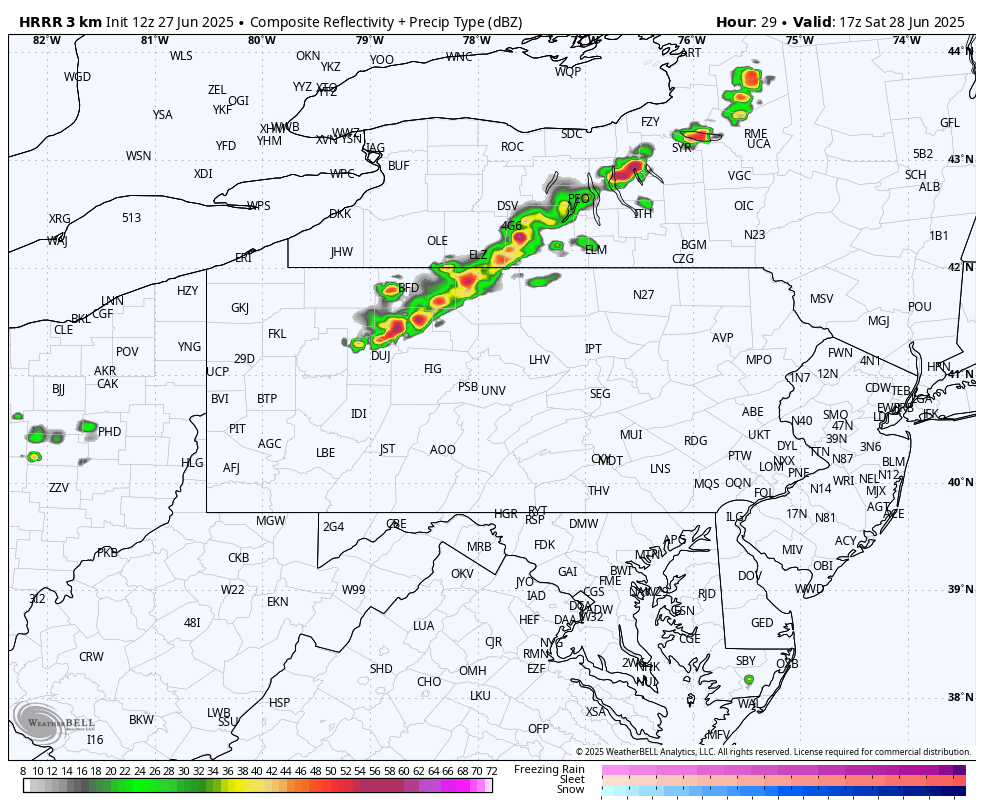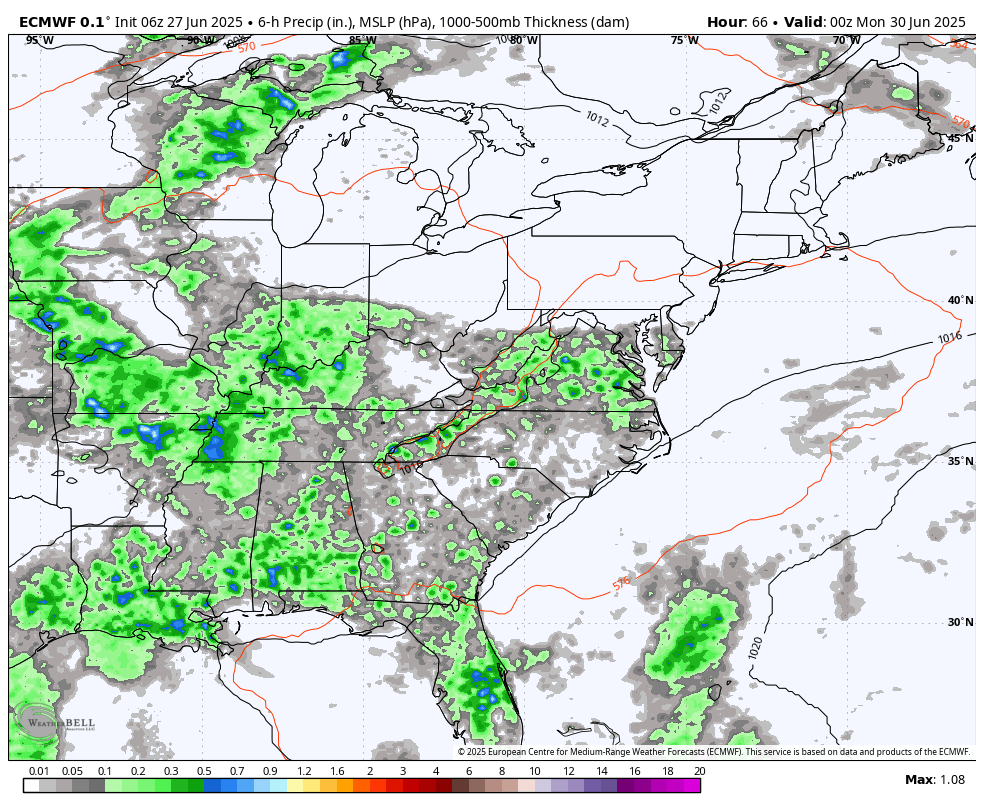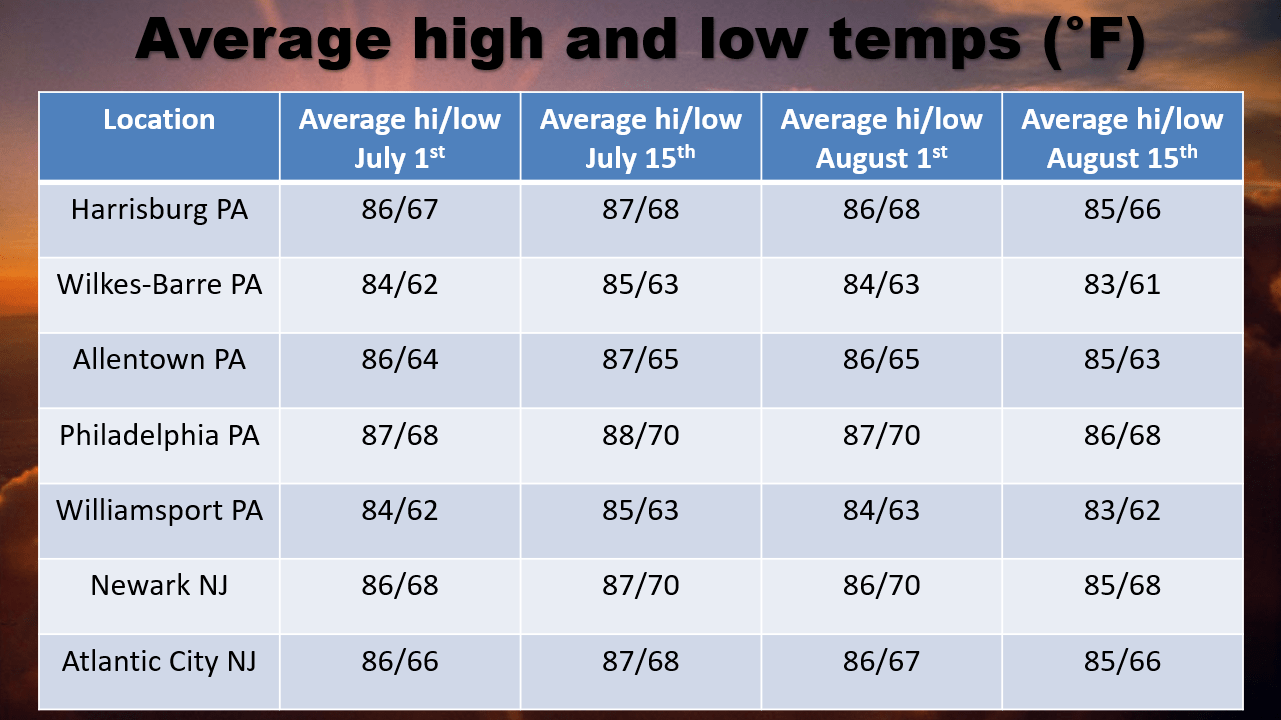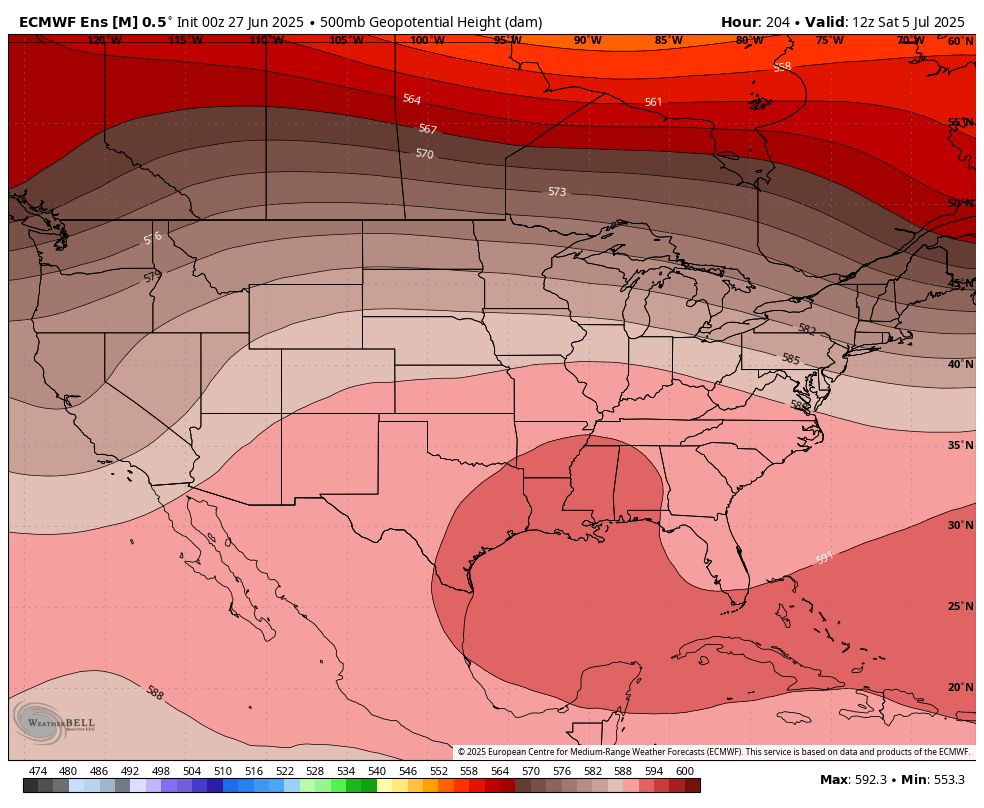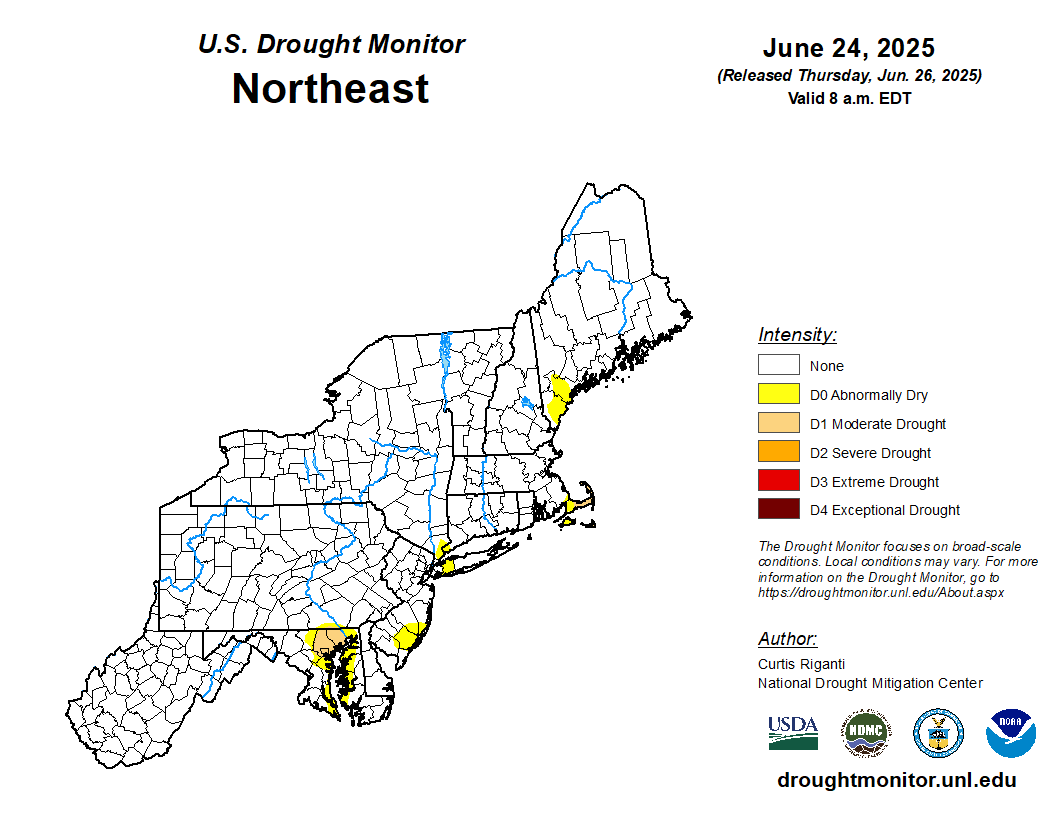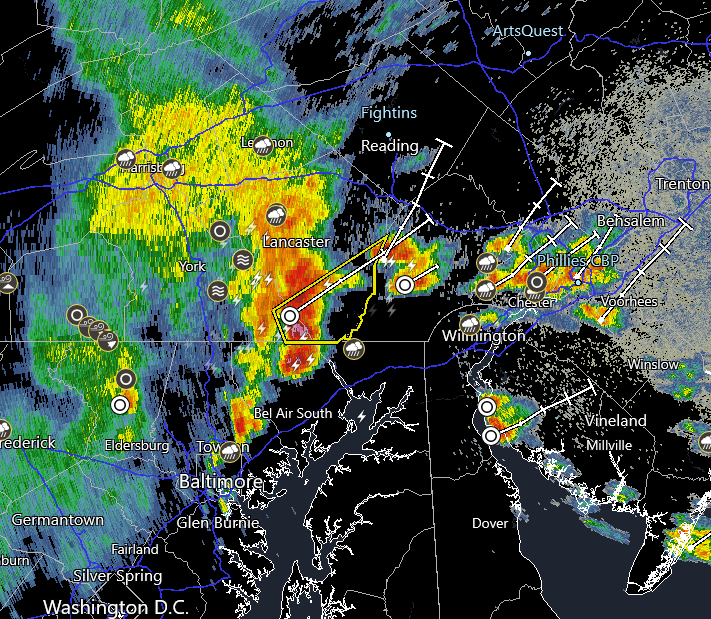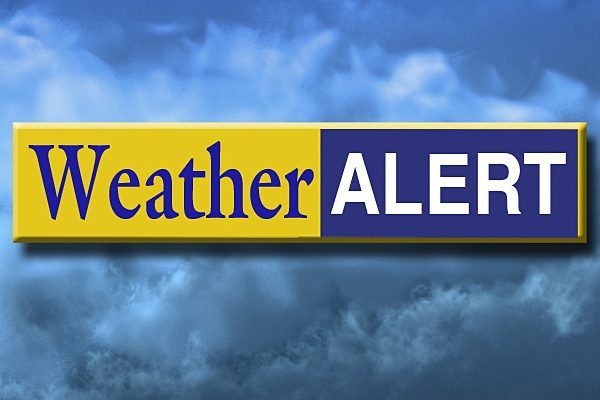OVERVIEW: The US drought monitor (photo toward the bottom of this outlook) maintains NO drought areas within our Pennsylvania, New Jersey, or Delaware locales. One moderate drought area remains over Baltimore and Harford Counties in Maryland, otherwise much of Maryland has also improved significantly. This is largely due to quite an impressive month of May with a top 5 rainfall month all-time in some locations, and generally near average precipitation continuing thus far in June. We expect June will finish with a near average (-0.5" to +0.5") precipitation departure for the month as a whole as a composite regional average. The month of July projections were maintained this week for a near to slightly above average (+0.0" to +1.0") precipitation departure for the month as a whole. August monthly projections will be included in next week's outlook.
Shorter term, a backdoor cold front is influencing the region Friday, and that front will lift northward through our region overnight as a warm front. This will warm temperatures considerably over the weekend on the opposite side of the warm front, and will quickly be followed by a weak cold front late Saturday. A few late day or evening scattered thunderstorms will be possible Saturday with that front, then the front stalls to the south of the region Sunday. This stalled front will return northward as a warm front Monday, and is quickly followed by a cold front Tuesday. The early next week period will feature scattered showers and thunderstorms with both boundaries, then dry until late in the upcoming Independence Day holiday weekend.
June we expect to finish with a near average (-0.5" to +0.5") precipitation departure for the month as a whole, with scattered thunderstorm activity still possible June 28th and 30th. The month of July projections were maintained this week for a near to slightly above average (+0.0" to +1.0") precipitation departure, using longer term climate models as well as seasonal trends. August monthly projections will be included in next week's outlook.
Breakdown of precipitation departures from normal over the next several weeks:
June 28th - July 4th: Near to slightly above average
July 5th - July 11th: Slightly above average
July 12th - July 18th: Near to slightly above average
July 19th - July 25th: Near to slightly above average
July 26th - August 1st: Near to slightly above average
August 2nd - August 8th: Slightly above average
Public/free available maps will be updated when a threat is imminent for significant weather on the weather alerts page throughout the year: http://epawaweather.com/weather-alerts/
Note: Any image below is clickable for larger viewing


